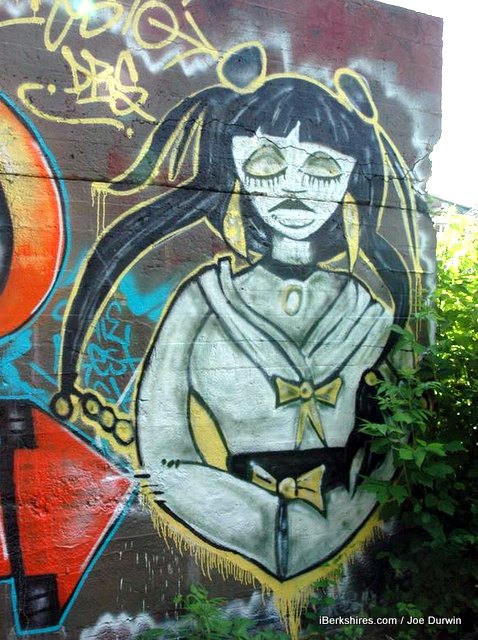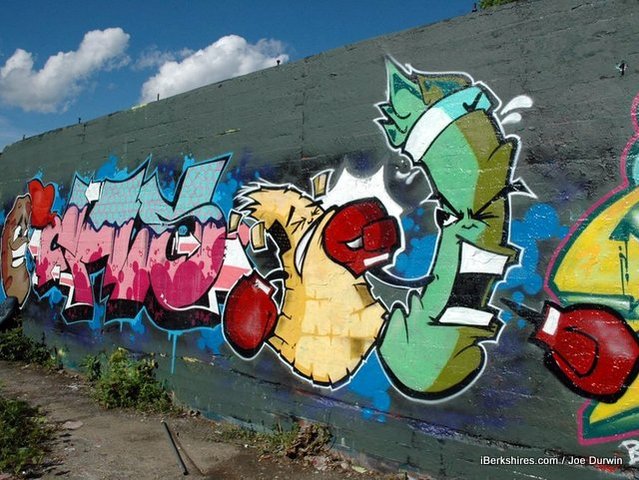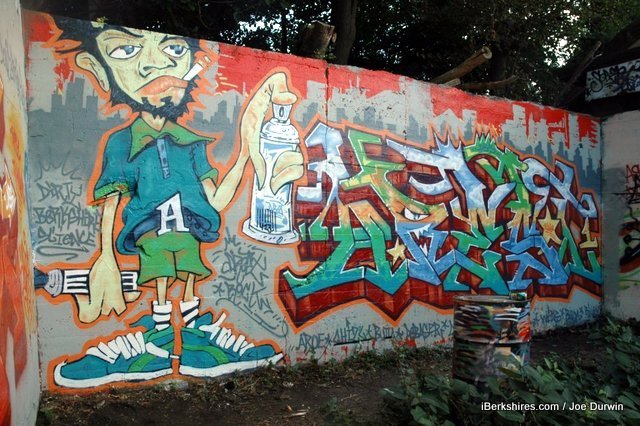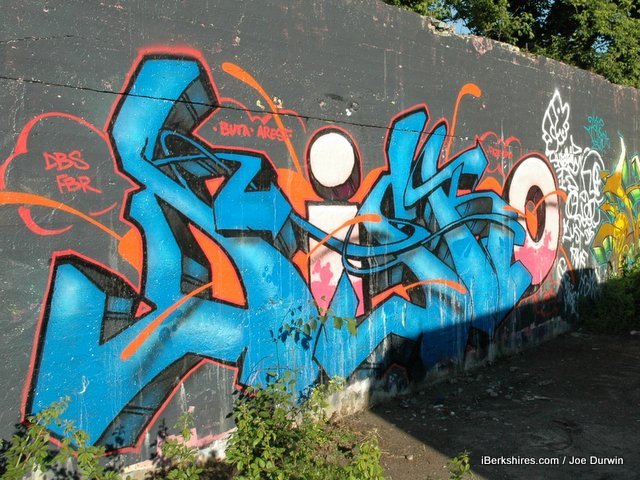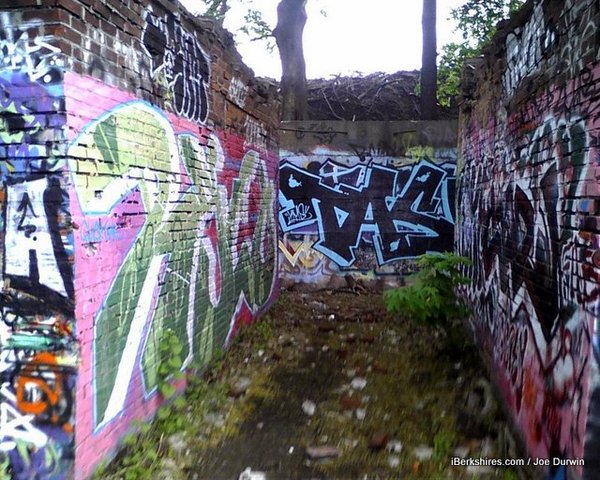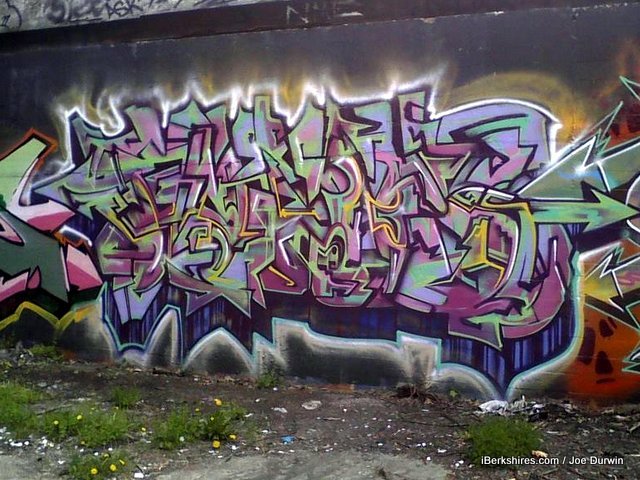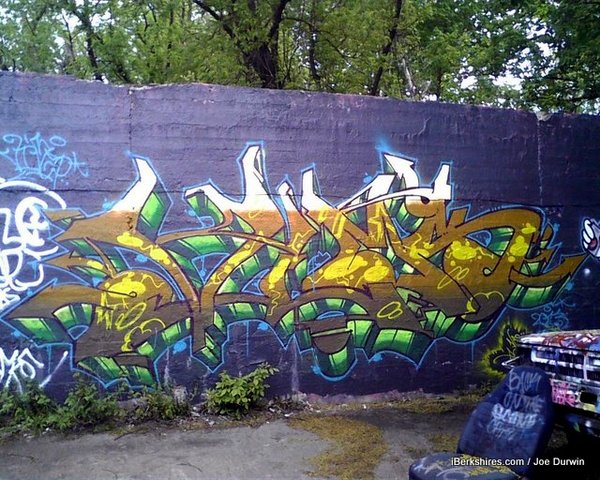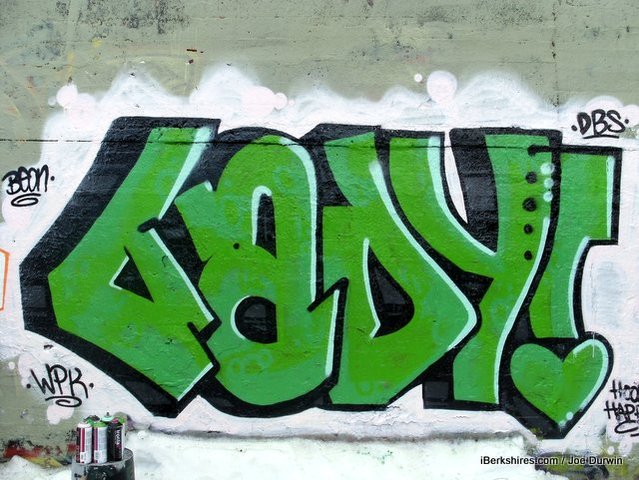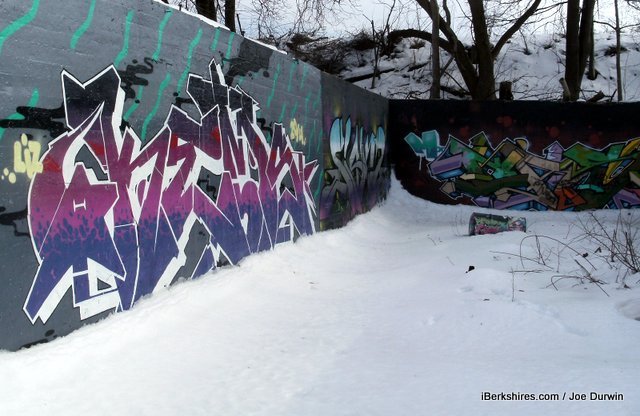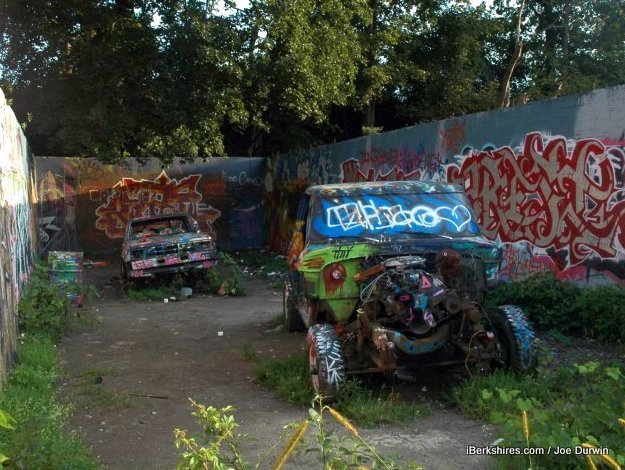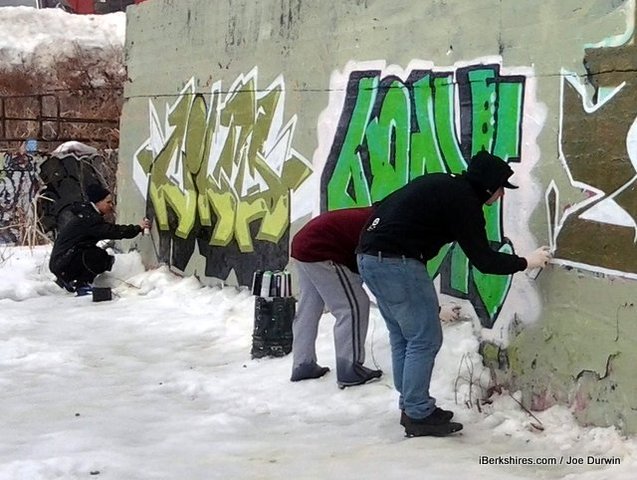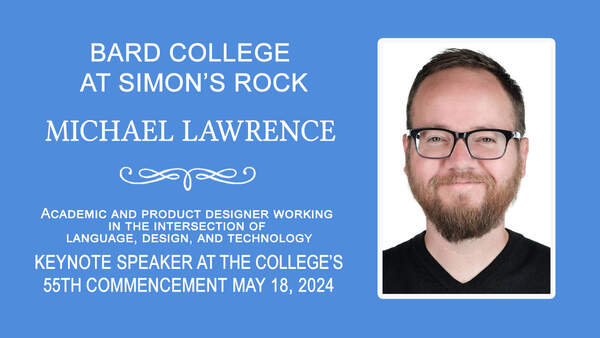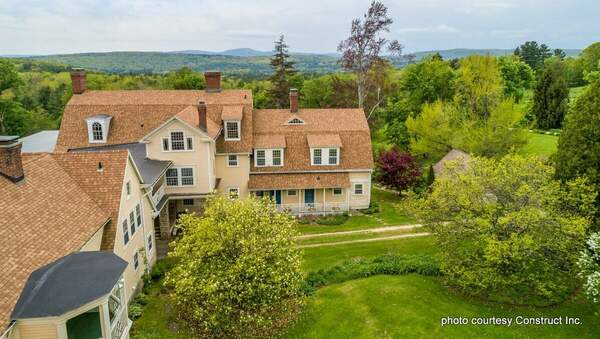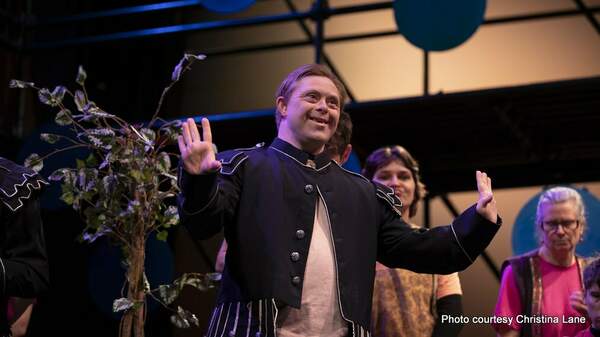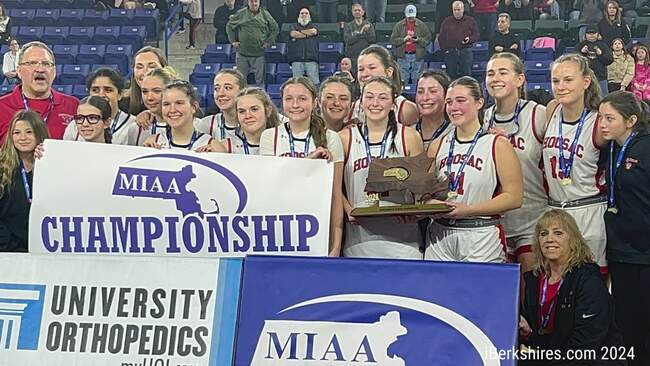Sometimes called the "Graffiti Museum," less formally "the graff spot" or, among a loose society of insiders, simply referred to by the name of the business on whose property it resides, it has become in recent years a kind of local mecca for graffiti writers.
Invited guests from more urban graff scenes in Springfield, Boston, Albany, N.Y., and New York City among others frequently make the trek to this obscure, but easily accessible site, to join local artists as they paint, paint over and repaint throughout the year on the remnant walls of the former commercial structure.
On the first warmish Saturday in March, half a dozen graffiti writers gathered in a central bay of this labyrinth of freestanding walls, pre-painted with rollers to a flat light green in preparation of their new work. Half the group were locals who frequent the spot regularly, the other half invited colleagues from Albany, all of whom had painted here at least once before.
"I love it," said Teaser, one of the New York contingent. "It's probably one of the dopest spots I've ever been to."
The "Museum" offers a legal, obstacle-free opportunity to engage in complex full pieces, sometimes characters or scenes, but more often large stylized writings of their own graffiti moniker — not to be confused with a "tag," a simpler one color rendition of a word or phrase, though these pieces may incorporate such tags.
This authorized, substantially disturbance-free environment affords writers the opportunity to pursue more detailed or experimental renditions than one would be able to in a quick tag or "throw up" piece done somewhere illicitly. For some it may be a substitute to more legally questionable methodologies, while for others it's just a relaxing supplement to other, riskier forms of street art.
Though use and even knowledge of the space is largely a trickle-down affair from a hierarchy of longtime regulars, there is no real curator to this rolling, ever-changing exhibition. According to some of these regulars, it's the basic rogue etiquette of graffiti writers that leads to the appearance of order and the relative cleanliness of the outdoor gallery.
"Be cool," Disco summarized, when asked what are the "rules" of exhibition in this museum.
"The etiquette, technically, is you don't go over something unless you're going to do something better," says Arest.
In practice, new works may last days, weeks or months, depending on size, quality, and location, as some sections of the ruins are more desirable, such as the central bay "main gallery" rechristened for spring this weekend.
"Everybody in Albany's whack, so even if you find a good spot to paint somebody's probably going to go over it right away, without ever thinking twice," said Colt, one of the visitors. "There's no etiquette there."
A kind of "invite-only" exclusivity and general discretion throughout a subculture of artists who, though tight-knit and well-connected via social networks, tend toward secrecy instinctively, has helped keep the Museum mostly free of complications. The desire to keep the location of this favorite graff site private was emphasized to this correspondent, as once in the past a publicity leak lead to a brief inundation of curious parties, an audience the artists here would rather avoid.
"There were people coming down here with baby strollers," said Disco. "It's not that kind of place."
Free of the public glare, graffiti writers can execute their temporary masterpieces in a more naturalistic setting to the form, letting the spray cans and beer cans pile up for later removal, safely ensconced in the company of their own peers and the slight hanging cloud of hued benzene chemicals.
While mostly clear of onlookers, the Museum is located, perhaps ironically, in close proximity to some railroad tracks, and can be glimpsed from certain angles by passing trains and the occasional rail worker. The regular passage of freights cars, always a staple canvas of this art medium, allows periodic opportunities for critique and nostalgia as the afternoon wears on.
At one point, the group discusses what these workers must think upon seeing gangs of graffiti writers, seen by some railroad employees as a natural enemy, as they calmly working away in these ruins.
Coincidentally, less than an hour later a passing rail worker walking past alongside the tracks smiles and waves.
"Nice work, guys," he called out amicably, nodding to some of the near-completed pieces.
"Bring us over a freight or two," one of them calls back. "We'll pimp it out for you."
By all accounts, the spot has been an active epicenter for graffiti murals for well over a decade, and while discovered by some, remains surprisingly hidden to the general public. Its regulars and occasional guests hope to keep it that way: off the grid, and all the richer in creative flavor for it.
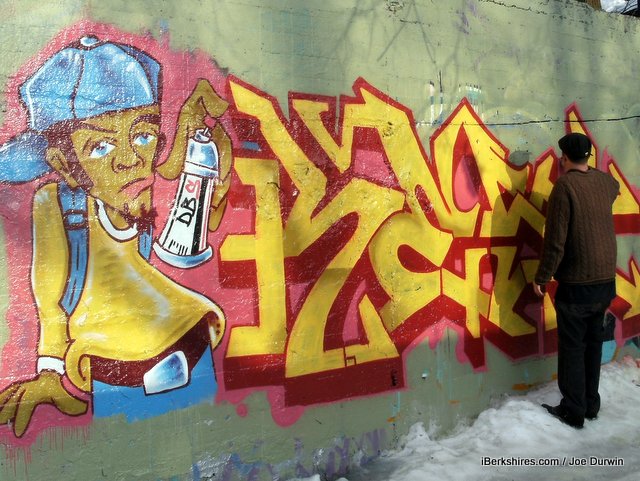 Artists were working over the weekend at the 'Graffiti Museum,' a little known outdoors studio in Pittsfield.
Artists were working over the weekend at the 'Graffiti Museum,' a little known outdoors studio in Pittsfield.